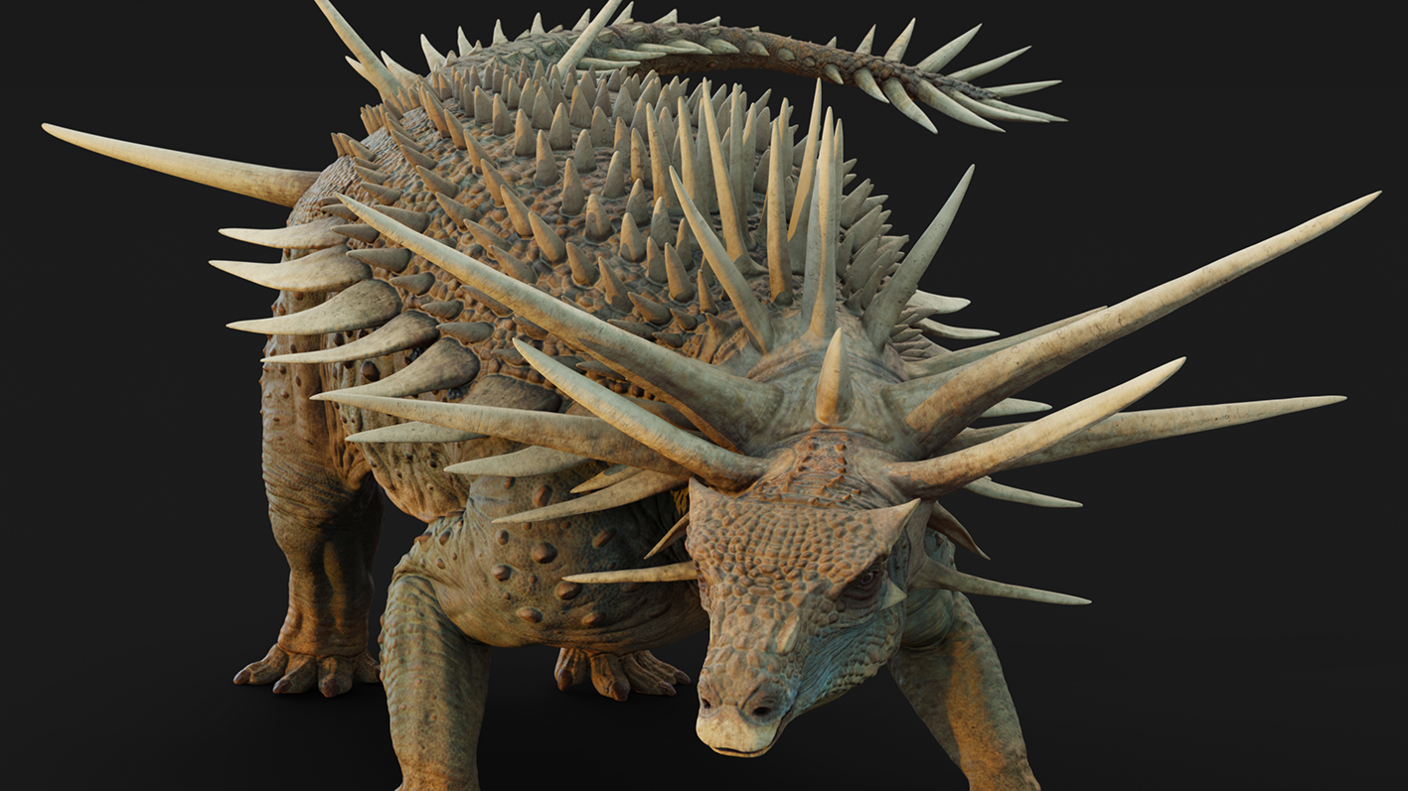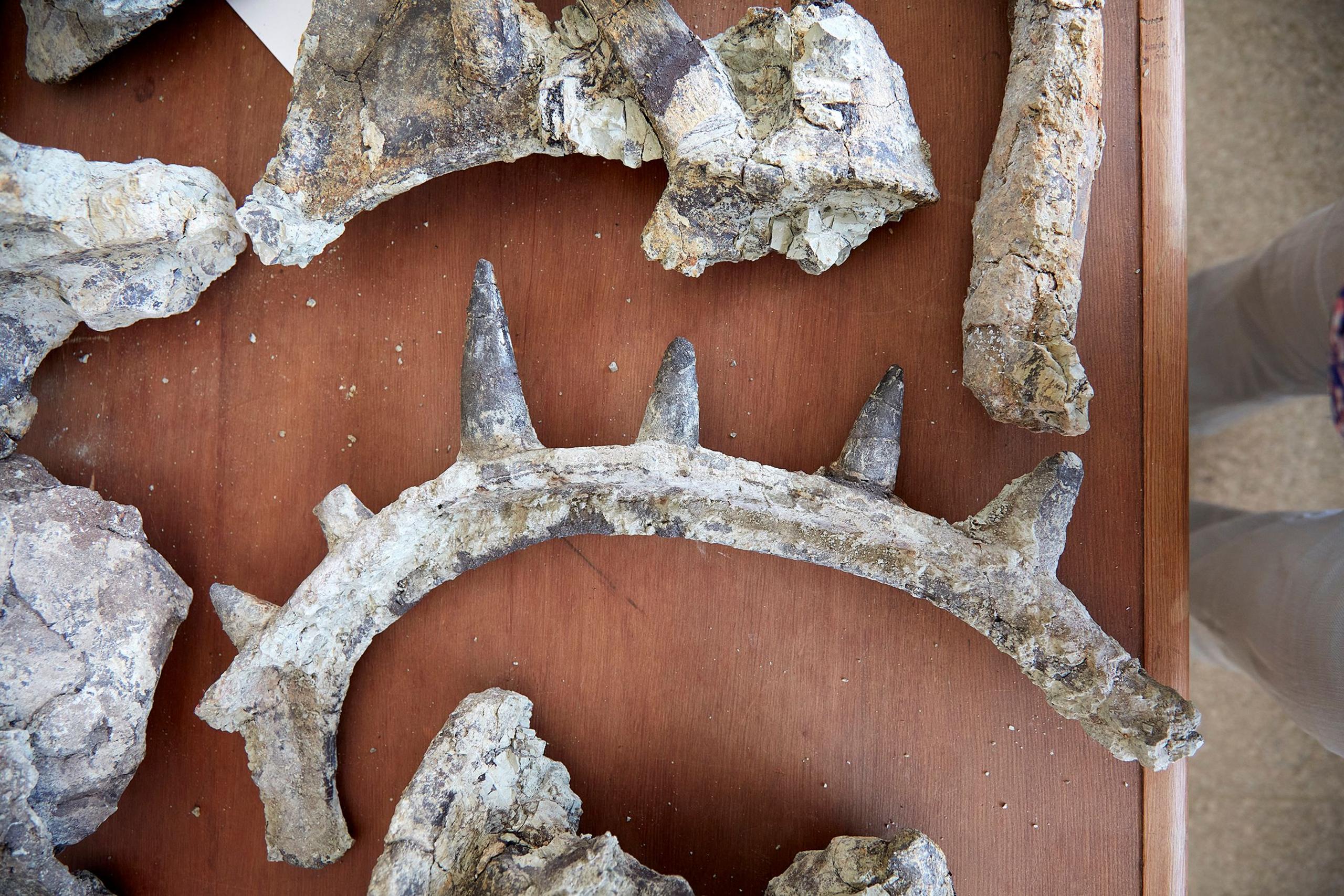'Bizarre' dinosaur had huge neck spikes, new research suggests

Artwork: the dinosaur had long spikes sticking out from the side of its head
- Published
Scientists believe that an unusual species of dinosaur discovered four years ago is even more "bizarre" than originally thought.
The Spicomellus afer, a new species of the armoured ankylosaur, was first identified by a rib bone fossil found in Morocco.
At the time, experts were baffled by the spikes which were attached to the bone.
Now, new fossils show the spikes were up to a metre long and suggests the tail weapons of ankylosaurs evolved much earlier than previously thought.
The research also suggests the spiked tails were not just for defence but possibly mating and display.
Strange spiked fossil reveals a brand new dino
- Published26 September 2021

The dinosaur fossils were discovered by a team of scientists in Morocco
The team of experts from the Natural History Museum, the University of Birmingham and Université Sidi Mohamed Ben Abdellah in Morocco, were able to build on previous research after new remains of the Spicomellus were discovered.
The research, published in the science journal Nature, reports that Spicomellus afer had a tail weapon more than 30 million years before any other ankylosaur, as well as a bony collar ringed with metre-long spikes sticking out from either side of its neck.
Previous research suggested that the armour of the dinosaur evolved gradually, but this new study suggests the armour was there from the start.
The authors say the ornate armour was probably used for display purposes to attract partners and later became simpler when the dinosaurs needed to protect themselves from huge predators.
Ankylosaurs were a group of herbivorous dinosaurs with short powerful limbs
Many of them were armoured and had tails that either had a club at the end or spikes.
Spicomellus is the world's oldest ankylosaur.
It lived more than 165 million years ago in the Middle Jurassic period, in what is now known as Morocco.
It was the first ankylosaur to be found on the African continent.

As ankylosaurs evolved, their armour became simpler and possibly more functional
One feature of early ankylosaurs that seems to have survived is the tail weapon.
While the end of Spicomellus' tail hasn't been found, the bones that do survive suggest that it had a club or a similar tail weapon.
This would be similar to later ankylosaurs.
Project co-lead, Professor Richard Butler of the University of Birmingham, said, "Seeing and studying the Spicomellus fossils for the first time was spine-tingling. We just couldn't believe how weird it was and how unlike any other dinosaur, or indeed any other animal we know of alive or extinct.
"It turns much of what we thought we knew about ankylosaurs and their evolution on its head and demonstrates just how much there still is to learn about dinosaurs."
